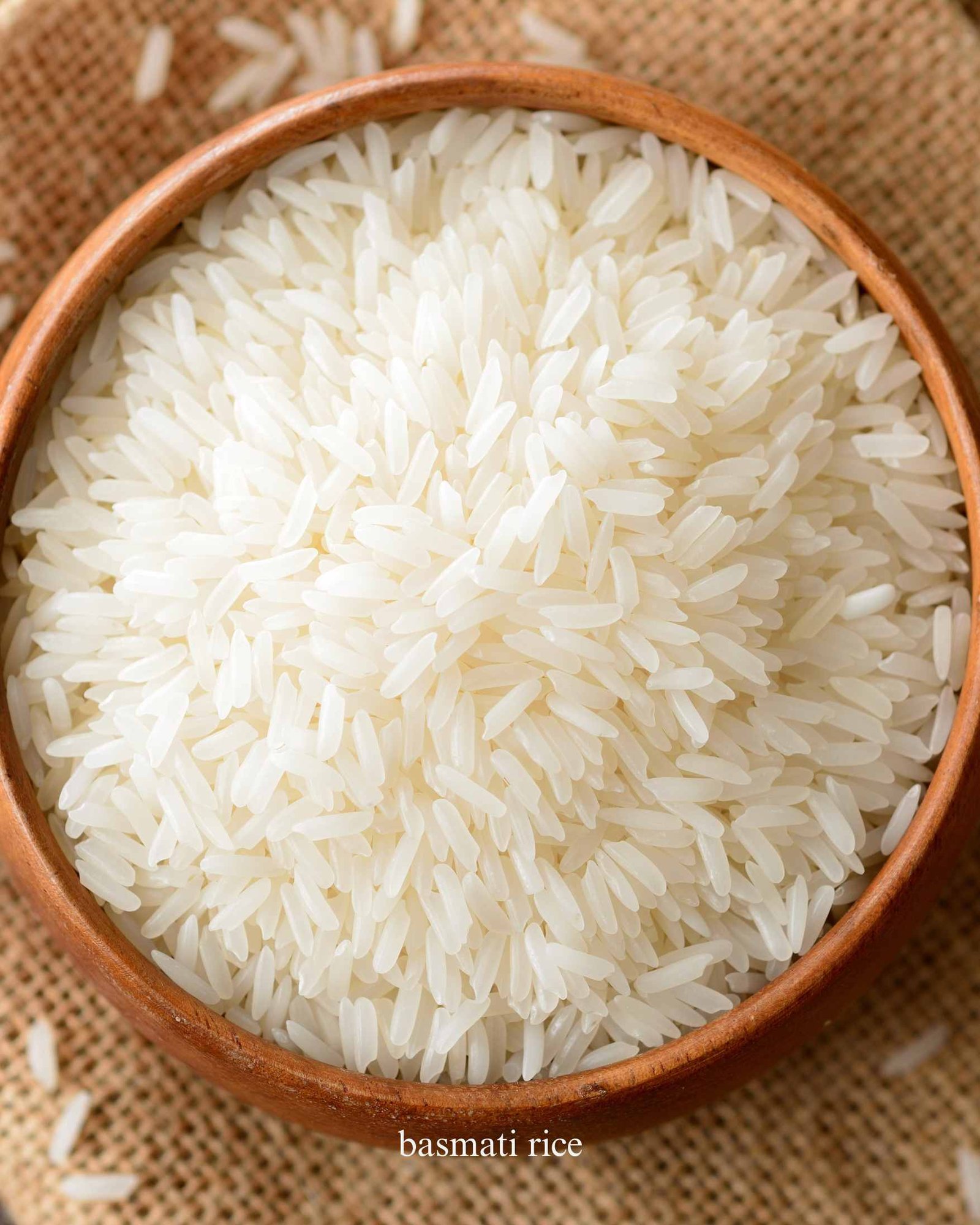
Newsletter Subscribe
Enter your email address below and subscribe to our newsletter

Enter your email address below and subscribe to our newsletter
Basmati rice is a popular long-grain rice that is eaten across India and the Middle East. It has a nutty flavour and has become a popular rice for many different recipes. Today, we’re diving into the world of this phenomenal rice and showing you the correct way to cook this type of rice as well as highlighting a few interesting ways to cook it.

This rice is primarily grown in the Himalayan regions of India and Pakistan. It has an interesting process of growth, in that it is aged for a few months to develop its unique aroma.
Basmati rice, Pot, Pinch of salt.
There are four types of Basmati rice in the world. The first one is called Traditional basmati, and it has an extra-long grain that becomes longer during the cooking process. This type of basmati rice will have a strong, nutty aroma. Many people favour this type of rice as it has a fluffy texture and does not become sticky. It is also ideal for biryani and pilaf.
The second type of basmati rice is called Sella Basmati (parboiled), which has a yellowish, golden color when it is uncooked. This rice has a firm texture and does not become sticky when cooked. It is commonly used in Spanish and Arabic dishes, such as Kabsa and Machboos.
The third type is called steamed basmati rice, which is steamed instead of parboiled. It has a firmer texture than Aged Basmati and Sella Basmati. It is ideal for everyday meals. The last type is Organic Basmati rice, which is typically less processed and free from pesticides and fertilizers.
Use an aluminium or stainless steel pot with a bottom that is heavy enough to ensure even heat distribution. The pot should not be so deep that it stops the steaming process. Using a lid is necessary to ensure that the rice steams, not boils. Parboiled rice may take a longer time to cook. (18 to 20 minutes) Whereas aged Basmati rice may require a little less time to cook. (12 – 15 minutes)
Rinse the rice once or twice to remove any excess starch. This step helps the rice achieve a fluffy texture. It is essential to use cold water for this process. Soak the rice for 20-30 minutes.
This step ensures that the rice cooks evenly and produces tender rice with a consistent texture. In this recipe, we’re cooking one cup of rice, which will serve three to four people. Add 1 3/4 cup of water to the pot and bring to a boil. Add the washed rice to the pot, add the water, and bring to a boil on medium-high heat. Once the water is at a rolling boil, reduce the temperature to low.
Cover the pot with a lid to insulate the steam; this step will ensure that the rice steams instead of boiling. Without a lid, it will create mushy rice that is overly soggy.
Apart from Biryani and Pilau, there are other ways to cook basmati rice. Cumin rice is known as ‘Jeera rice’ in India. It entails cooking and toasting one teaspoon of cumin seeds in butter or ghee, then mixing them into the basmati rice. Garnish with finely chopped parsley.
Adding saffron to rice will add a golden hue to the dish and enhance the basmati rice with a light floral scent. Soak a few strands of saffron in warm water and add it to the cooked rice. This technique is common in India, the Arabian Peninsula, and Iran.
Lemon Basmati rice incorporates the zest of a lemon into a dish. Two tablespoons of lemon juice added to the rice, along with three tablespoons of butter, will create a delicious citrusy dish. Sauté onions and leeks, thereafter decorate the rice to give it a vibrant flavour.
Herbs such as parsley, cilantro, dill, and mint can also enhance the flavor of the rice in several ways. Consider adding sautéed green peas, caramelized onions, and garlic to create a spectacular dish.
The rice can be served with your favourite curries, such as Tikka Masala, Butter Chicken, Chicken Curry, Tuscan Cajun Shrimps, and Kofta Kebabs. The best part about Basmati rice is that it pairs well with comforting stews and lentil-based dishes.
Store Basmati rice in an airtight container in the refrigerator for 3 to 4 days. You can reheat the rice in the microwave or on the stove. Freezing basmati rice is also possible; it is essential to use a freezer-proof container for storage. The rice will last for three months in the freezer. Defrost it in the refrigerator and reheat it on the stove to remove excess water.
Do not leave the frozen rice to thaw on the countertop for an extended period. If rice is defrosted from frozen to room temperature and left out, it will be prone to bacterial growth and spoilage.
